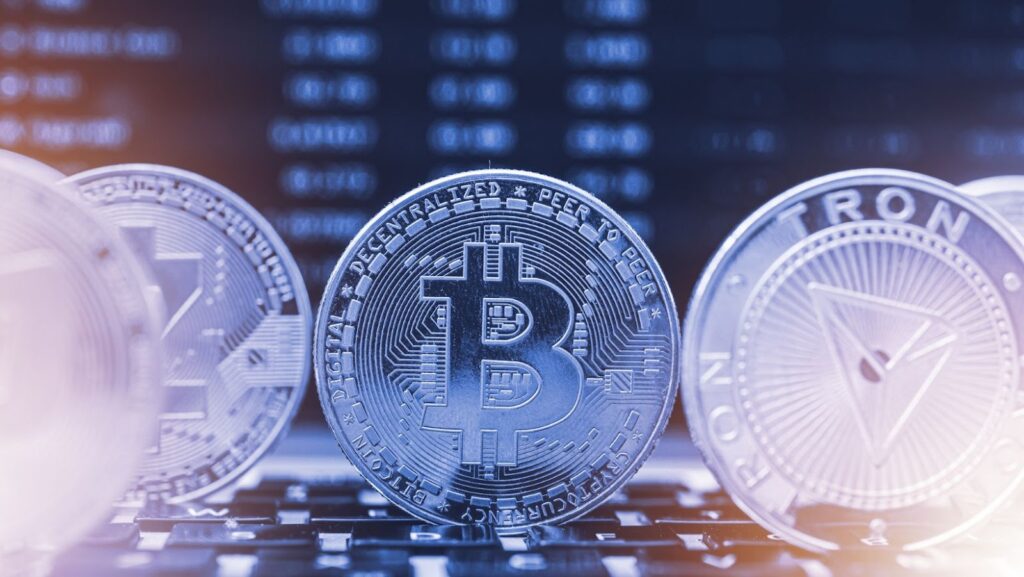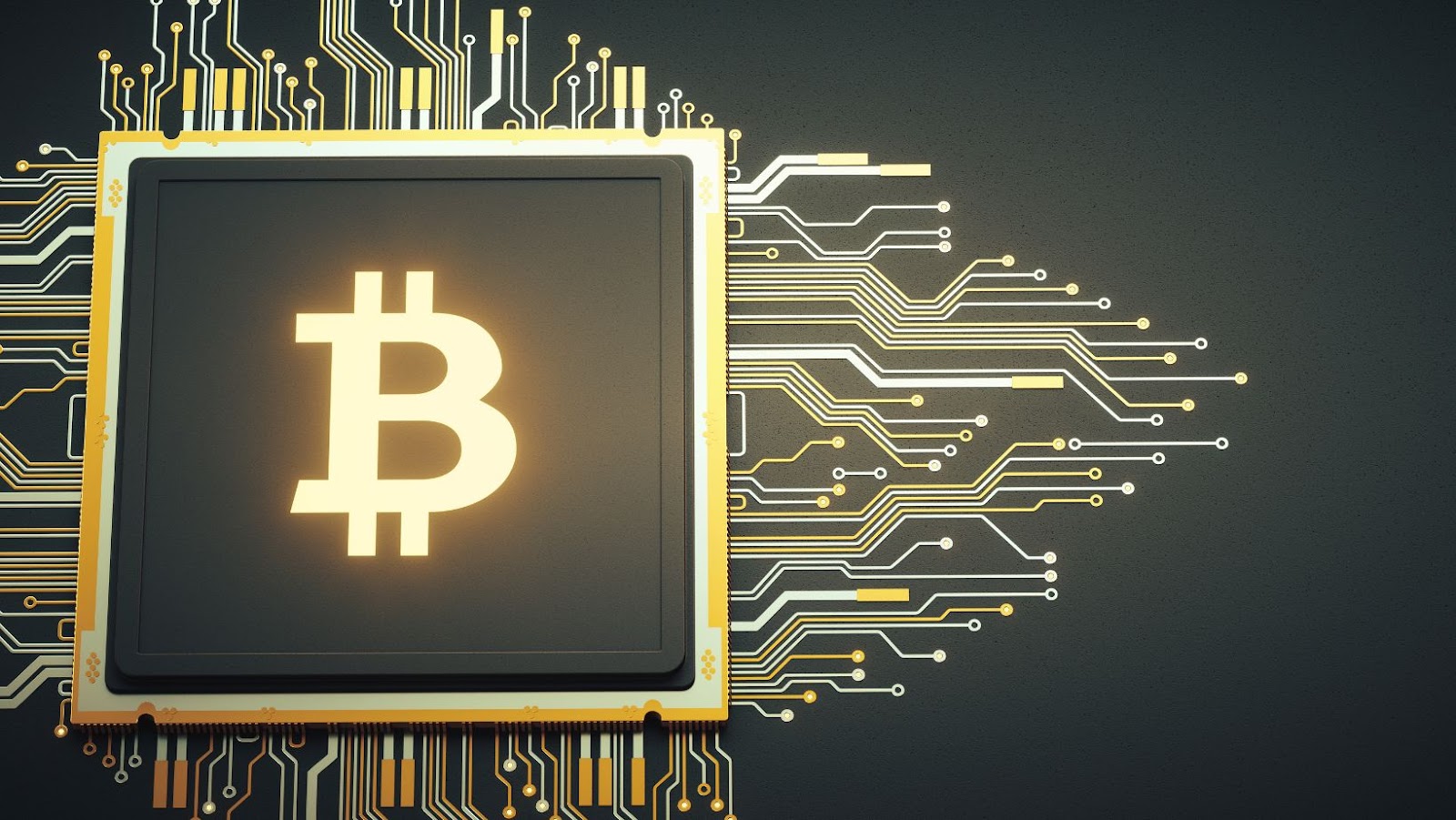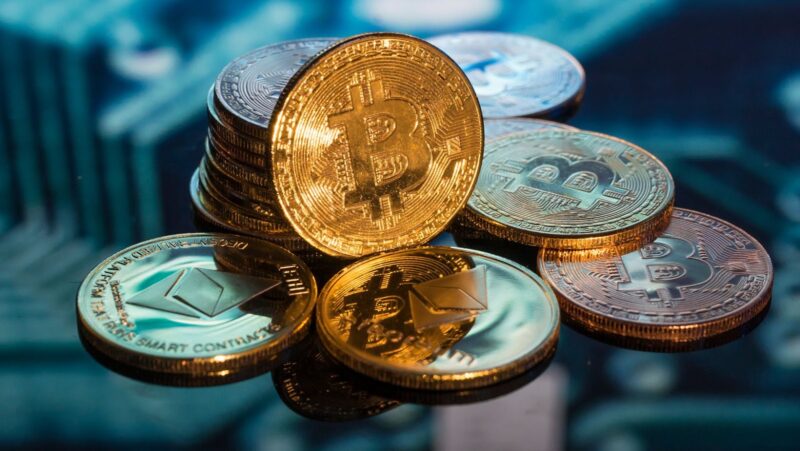
Recently, there has been a lot of buzz around the potential benefits of introducing a U.S.-backed digital currency. This technology was made possible due to the innovative work of companies like Circle that have pioneered the development of a tokenized, digital dollar.
Let’s look at how this new form of money could benefit the U.S. economy and its citizens.
Definition of a U.S.-backed digital currency
A U.S.-backed digital currency is a new kind of money backed by the United States government and potentially subject to control from the Federal Reserve System. The digital currency would come in various forms, including private sector digital currencies, central bank-issued digital currencies and public ledger-based payment systems, such as the Libra stablecoin.
Though the concept behind U.S.-backed digital currency is still taking shape and faces a range of regulatory challenges, its potential use cases may include faster payment processing times and global financial inclusion for those living without traditional banking systems in their countries. Even if the idea of a U.S.-backed digital currency doesn’t reach full realisation, post-COVID-19 regulators are noticing the innovative payments ideas that are catching traction across different countries worldwide.
The distributed ledger technology (DLT) used to support transactions within these nascent systems has created an increased need for transparency and faster payment tracking capabilities than traditional banking networks could offer. Adopting such technology could mean faster payments turnarounds or even greater decentralisation regarding international citizens’ access to goods and services outside their home countries. As discussions amongst U.S politics continue how blockchain technology can be regulated to foster innovation within this sector, what does it mean for how a U.S.-backed digital currency would operate?
How Circle could create a U.S.-backed digital currency
Circle, a payments company, recently launched a cryptocurrency called USDC (U.S.-based digital currency). It is the first U.S.-backed financial stablecoin supported by the U.S. government through its partner CENTRE Consortium. The Ethereum blockchain powers USDC. It complies with existing regulations and global banking standards to provide an accessible and resilient payments infrastructure to its users within the U.S. and globally.
The introduction of USDC provides several benefits to users, including global access to an open and secure financial system, improved payment security, faster transaction settlements, low transaction fees, and increased transparency for financial transactions on the Ethereum Network compared to traditional transactions using paper currency or other forms of digital money transfers involving online intermediaries such as PayPal or Western Union. It also offers more flexibility in managing user funds due to its instability-resistant nature and enhanced liquidity that makes it ideal for investments and risk management activities.

For business owners using Circle’s platform, USDC will offer substantial savings due to reduced transaction fees compared with those charged for traditional payment processing services such as credit cards or PayPal accounts; increased customer confidence with enhanced security features; decreased fraud risk due to immutable ledger technology; improved transaction speeds as there are no central authority entities required when settling transactions; decreased risks of privacy breaches comparing traditional banking systems; elimination of profitable handoffs while transacting; additional revenue streams by leveraging steep discounts offered on crypto-to-fiat conversions; stronger relationships with customers that pay in crypto reducing fraudulent activities associated with cash transactions; access to liquidity pool associated with exchanges offering USDC trading pairs providing additional financial insights that potentially lower costs associated with lengthy trade negotiations while exploring opportunities in foreign markets; improved settlement transparency resulting from blockchain-based payment systems eliminating cross border discrepancies associated untrustworthy middlemen when making online payments abroad; improved monitoring capabilities thanks to real-time visibility into all cryptocurrency transactions allowing businesses comply faster with different regulatory requirements including KYC/AML compliance regulations worldwide without necessarily having a presence in each country individually for compliance purposes such reporting purposes related to ongoing sales taxes’ collection efforts among others areas where full visibility over payments process may represent significant benefits for companies operating under various jurisdictions especially across borders releasing time consuming resources heavy efforts traditionally bestowed into data gathering process required for legitimate operation in any given geography around world thus unlocking additional cost saving opportunities resulting from initiatives striving towards incorporation cryptocurrencies throughout these economic regions internationally while being compliant since day one overall removing tax leakage elements while transacting finding new streams capital potentially opening new markets previously impossible venture suddenly now worth exploring particularly taking into account mentioned advancements fully clarifying key benefits creating paying digital coin hosted Circle expanding potential already present company like never before seen history constantly changing ledgers becoming part mainstream processes daily lives millions people planet fundamentally reshaping monetary environment groundbreaking albeit controversial developments provider further progress expected coming months especially citing recent news about carrier looking convert airline industry entire organisation spearheaded selected venture undoubtedly shaping times come very soon expected official announcement regarding expansion ambitions wider public remain tuned definite possibility stellar developments less than year mark close horizon absolute certainty stating need convenient single asset apps replacing painful long procedure manually updating them between products conventional has served us many decades still works fly fair skies
Benefits of a U.S.-backed Digital Currency
Circle’s proposed U.S.-backed digital currency would offer many advantages to businesses and individuals. It would provide greater financial inclusion by connecting the unbanked and underbanked to an open, transparent financial system. Additionally, it would provide a regulated and secure payment option in an otherwise fragmented and volatile digital asset market. Furthermore, it could be used to facilitate faster and more cost-effective payments.
Let’s examine the benefits of a U.S.-backed digital currency in more detail.
Increased financial inclusion
Introducing a U.S.-backed digital currency would result in greater financial inclusion and empowerment for individuals who have previously been excluded from traditional banking methods due to geographical distance, lack of suitable identification or limited access to traditional fiat currency. In addition, digital currencies are borderless, meaning those living in remote or underserved regions can access secure money without needing a bank account. Depending on the design parameters provided by policymakers, could also provide access to more public sector services such as health care and education.

Digital currencies would open up payment options for low income households who may be unable to pay the transaction fees levied by credit institutions or manual processes plus reduce burdensome bureaucracy associated with multiple ID card requirements. In addition, a digital currency would provide a viable alternative to cash transactions, which may prove vulnerable to theft, counterfeiting or fraud. Furthermore, digital currencies increase financial transparency owing to their ease of tracking and auditability – thereby providing stakeholders with greater oversight into fund movements through tighter security protocols which require multi-level encryption and identity verification procedures.
Using digital currencies would also allow for faster payments across all levels of the economic system – individuals could transact directly without intermediaries such as banks causing delays; businesses could benefit from quicker purchase decisions and public sectors could enable expedited payments smoother transfers among local agencies and governments globally. These advantages would result in less manual administrative costs and better experiences such as reduced time lags when settling payment disputes or making large payments across different territories — ultimately increasing cost efficiency while reducing transaction costs incurred by both customers and businesses.
Lower transaction costs
A U.S.-backed digital currency could help reduce the costs of making payments and settling transactions. This could benefit both consumers and businesses, by allowing them to save on fees, ease administrative burdens and boost efficiency. Eliminating certain intermediaries and streamlining processes could drastically reduce costs of sending money or purchasing goods. Moreover, a U.S.-backed digital currency would eliminate some of the risk of exchanging one form of value for another within different parts of the world’s financial system.
Additionally, lower transaction costs would result in improved market liquidity and better market access for small businesses seeking to participate in commerce across borders. By streamlining processes involved in cross-border exchange, a U.S.-backed digital currency could help drive down the costs of transacting internationally. In addition to significantly reducing barriers for businesses seeking to enter global markets, it could also enable more efficient international payments and allow consumers unprecedented access to goods from around the world at competitive prices.
Improved security
A U.S.-backed digital currency could significantly improve the security of both transactions and the wider financial system. Currently, standard financial technology (fintech) relies on various encryption and authentication methods that can cause vulnerabilities in the system.
A U.S.-backed digital currency would utilise blockchain technology, which is widely considered to be more secure than traditional payment networks. This type of system would ensure that no transaction could be made without appropriate authentication and authorization from both parties, as well as using smart contract technology to design responsive contractual agreements.
This improved security could provide greater protections for consumers against fraud and identity theft, as well as cybersecurity concerns caused by malware or hacks from cyber criminals. It could also make it significantly more difficult for money launderers or other criminal elements to use the financial system for their gain.
Faster payments
Using a U.S.-backed digital currency could facilitate faster payments and transactions, transferring money nearly instantaneously from person to person and from business to business. This would eliminate the need for banks or financial intermediaries as all transactions would occur digitally.

In addition, there would be no more waiting for checks in the mail or payments to clear when money is transferred electronically.
Because the U.S. would back the digital currency, it could provide an additional layer of security and trust compared to traditional currencies and payment systems. In addition, a government-backed digital currency would be easily convertible into cash, meaning that anyone with access to the internet could have access to their finances at any time and anywhere around the world.
In addition, digital currencies are typically stored on distributed ledgers that don’t require a middleman to process and settle payments — meaning they are less vulnerable to manipulation or fraud than traditional payment systems.
Potential Challenges
Before considering the potential benefits of implementing a U.S.-backed digital currency, several possible challenges should be considered. First, since the U.S. dollar is already the world’s reserve currency, it could be difficult for Circle to convince individuals and institutions to use a digital currency instead.
Additionally, digital currency regulations might be difficult to navigate and require considerable resources to manage.
Regulatory hurdles
Implementing a U.S.-backed digital currency would likely encounter several significant legal and regulatory hurdles. For example, the Constitution’s separation of powers framework may limit Congress’ ability to create such a currency, as financial and monetary laws are traditionally under the purview of the executive branch in the U.S. government.
Additionally, many existing statutes may need to be amended or rewritten to account for this new currency system, if possible within the existing framework. Furthermore, consumer protection laws would need to be reevaluated given the lack of tangible cash holdings and privacy regulations to ensure individual users are given adequate protection for their financial information stored on an open ledger bookkeeping system such as blockchain technology.
Lastly, AML/CFT regulations must be implemented with any digital currency design due to the risk of illicit activity associated with a decentralised system that could potentially allow anonymous transactions without proper tracing mechanisms in place.
Many experts believe that significant revisions must be made across various government agencies before a successful implementation could realistically occur.
Potential for financial instability
The introduction of a U.S.-backed digital currency could potentially have destabilising effects on the financial system. This is true for both the short-term and long-term implications, as the currency would be widely used and accepted worldwide. In some cases, its value may not be stable or reliable and there could be significant fluctuations in price due to changes in economic conditions or other factors.
Additionally, if a global financial crisis were to occur, the digital currency would likely decline alongside every other asset class – this may lead to some investors taking big risks with their investments to remain ahead of the game.
Moreover, there may also be issues with payment systems becoming overly reliant on a single digital currency should it become widely adopted – this could lead to too much pressure being placed on any system and disruptions arising in global payments networks due to heavy traffic.
Finally, given that digital currencies are not backed by traditional banking services such as FDIC insurance or reserve banking requirements, consumers may be less willing to trust it as a viable payment option, leading to further instability within the broader financial sector posing risks for economic stability internationally.
Difficulty in tracking transactions
Arguably the greatest challenge associated with a U.S.-backed digital currency would be the difficulty in tracking financial transactions. Tracking and verifying digital transactions can be difficult and complex regardless of which cryptographic technology is employed, however, these processes become even more challenging when dealing with the U.S. dollar due to its extensive circulation worldwide. In addition, since criminal activity is often conducted in cash, tracking financial transactions has become an area of increased security concern for policy makers and will need to be addressed properly when adopting a digital currency backed by the U.S government.
Additionally, users’ identities need to be managed carefully when transacting a digital currency such as knowing who owns which wallet address; this information needs to be collected by using complex algorithms that access data from multiple sources to ascertain whether certain addresses are linked to any particular individual or entity.
Lastly, there will always be a certain risk associated with any type of transaction that uses cryptocurrency even if the U.S dollar backs it due to its potential for fraud and illicit activities like money laundering or terrorist financing – which could create an elevated threat landscape for any country employing such technology.








